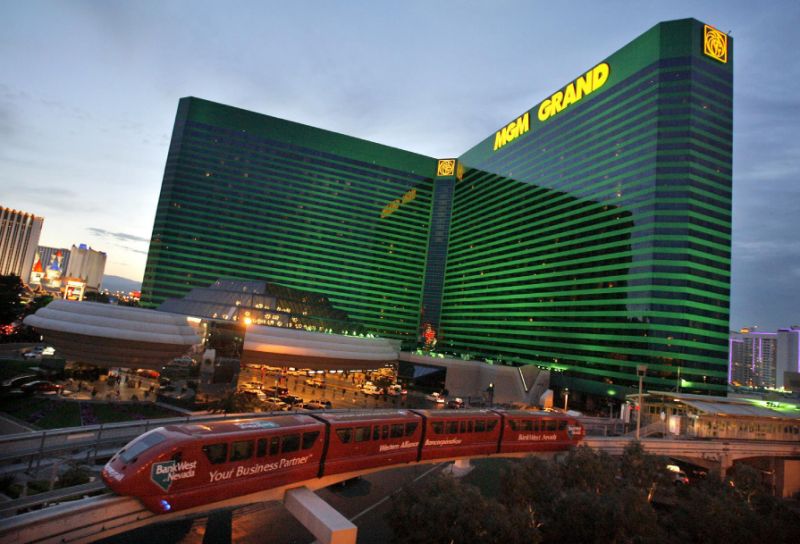Those trademark Las Vegas lights may one day woosh by windows of a light rail train ferrying visitors from the airport to casino lobbies.
Local transportation leaders are floating a 30-year-plan that could cost more than $12 billion involving everything from wider sidewalks and more pedestrian bridges crisscrossing the Las Vegas Strip to extra monorail stops and planning for a light rail route linking the airport to downtown.
It’s Sin City’s gamble to keep travelers coming to its casinos and convention centers well into the future.
“We can continue to pursue the status quo, as we have historically,” states the Transportation Investment Business Plan from the Regional Transportation Commission of Southern Nevada. But that would mean severe consequences to the area’s tourist- driven economy that competes with destinations already connecting their airports and city centers with mass transit, it notes.
The plan was born from a single group of transit officials, tourism leaders, taxi owners, hoteliers — some of whom had never spoken before until the CEO of the Las Vegas Convention and Visitors Authority convened them two years ago, tasking them to leave self-interest aside.
^^^^^^^^^^^^^^^^^^^^^^^^^^^^^^
Note from Storm: I was in Las Vegas in 2014 keynoting a conference on sustainability, and was struck be how badly-planned the city is—especially for pedestrians—even by our low American standards.
The Las Vegas Strip is designed almost exclusively for the benefit of cars. The monorail is hidden behind the hotels and casinos, instead of being on the Strip, where it should be. And the lack of rail connecting the airport to downtown is just plain primitive.
In my talks with local leaders, I discovered that they are fully aware of all these design and planning deficiencies, and have been for decades. In fact, Las Vegas has an impressive array of enlightened leadership, especially in the areas of water efficiency and renewable energy.
But public leaders don’t traditionally call the shots in this town. Casino owners are behind almost all of these community failures. They don’t want their customers to leave their hotel/casino once they arrive: they want every dollar in their pockets: food, drink, entertainment, and gambling. They have no interest in making the city more pedestrian-friendly, more efficient, or more attractive. And what they say goes.
It gets worse, though. The area around the city possesses a wealth of gorgeous natural resources that should be driving a healthy tourism economy of campers, hikers, outdoor sports enthusiasts, and nature lovers in general.
But most attempts to link and market the area as a tourism destination beyond conventions and gambling have been blocked by casino owners. They want all the attention on the casinos, and–should someone escape theirs–they certainly don’t want them leaving the city. This is obviously silly, since those nature-oriented tourists comprise a whole new group of potential casino customers. After all: who’s going to travel to Las vegas and not visiting the famous Strip?
Now, with this huge transportation proposal, it seems the city might be on the way to undoing some of the mistakes of the past, and city leaders might be regaining a modicum of control over their domain.

